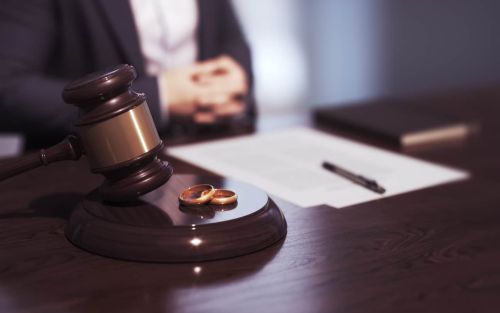Menu
What is a 9-207 Statement?
June 12th, 2025

The divorce process involves much more than simply ending the marital relationship. It also divides property that was acquired by either spouse during the marriage. A 9-207 statement must be filed with the court before trial and outlines whether spouses agree on how their property should be characterized when they part ways. The statement helps a Maryland court determine the treatment of a couple’s property in divorce — and can impact a judge’s decision in the event there is a dispute regarding property division.
What is a 9-207 Statement?
Also referred to as a “Joint Statement of Marital and Non-Marital Property,” a rule 9-207 statement is a document that is required by Maryland courts in divorce cases where relief involving property is requested. It lists all property owned by both parties. The spouses must agree or disagree on the statement as to how their property should be characterized, and whether each item is a marital or non-marital asset.
Some examples of marital property include the following:
- Real estate
- Vehicles
- Retirement accounts
- Business interests
- Bank accounts
- Stocks and bonds
- Artwork and jewelry
- Intellectual property
- Investment accounts
The 9-207 Joint Statement of Marital and Non-Marital Property is a joint effort between spouses, and they must both participate in the process of classifying each item of property. Although a 9-207 statement is not intended to be a substitute for discovery in divorce, it can help to streamline the litigation process by requiring the parties to clearly identify their assets. This can help reduce the potential for disagreements that could arise.
What are the Procedures and Timelines Involved with a 9-207 Statement?
There are important timelines to be aware of regarding the procedures for filing a 9-207 statement. While the joint statement is typically filed with the court before a pretrial conference, it’s essential to adhere to the necessary procedural requirements to avoid the consequences of non-compliance.
Specifically, spouses must comply with the following procedures in connection with a Rule 9-207 statement:
- Preparing and serving the statement — Each party must prepare and serve a proposed statement on the other side at least 30 days before it is due to be filed.
- Signing the statement — At least 15 days before the joint statement is due, the plaintiff must sign it and serve the document on the defendant for their approval and signature. The statement must accurately reflect each party’s position.
- Filing the joint statement — Under Maryland law, the joint statement must be filed by the defendant at least ten days prior to the scheduled trial date, or any earlier date that the court selects. If the defendant has chosen not to sign the statement, they must provide a statement with the specific reasons as to why they did not sign.
If either side fails to comply with the requirements for a joint statement, the court may sanction them. For instance, the court may order that the property be classified in accordance with the statement provided by the complying spouse. A judge may also issue an order refusing to allow the noncomplying party to oppose designated assertions on the complying party’s statement, or prohibit the noncomplying party from introducing them into evidence.
How to Compile a 9-207 Statement
Before you begin compiling your 9-207 Joint Statement of Marital and Non-Marital Property, make a list of all the property you own and note when it was acquired. Property owned by either spouse before marriage is considered separate property. Any property acquired during the course of the marriage is considered marital property, regardless of which spouse’s name is on the title. While complexities can arise when assets have been commingled, your attorney can help you determine whether an item should be classified as marital or separate property.
It’s crucial to be as specific as possible when compiling a 9-207 statement. The statement requires the following information about each item of marital and non-marital property:
- A description of the property
- How the property is titled
- The fair market value of the property
- Any liens, encumbrances, or debts associated with the property
If either party does not agree about the title or the value of the property, they must specify their assertion as to how the property should be titled or valued.
Contact an Experienced Maryland Divorce Attorney
Preparing a 9-207 statement can be overwhelming — an experienced and compassionate divorce attorney can guide you through the process. At the Law Office of Shelly M. Ingram, our Fulton, Maryland divorce attorneys provide high-quality representation for a wide range of divorce and family law matters. Trained in collaborative divorce, mediation, and traditional divorce litigation, we will work with you to find a tailored strategy that will ensure the best possible results in your case.
To schedule a confidential consultation with an experienced Maple Lawn divorce attorney, call us at (301) 658-7354 or contact us online.


